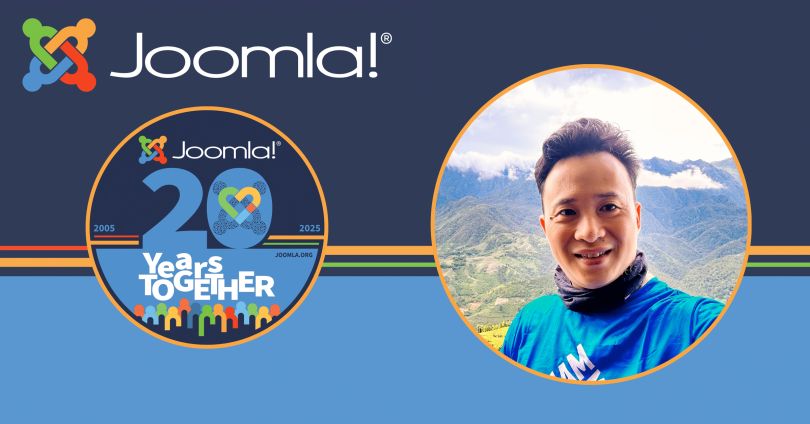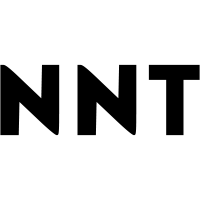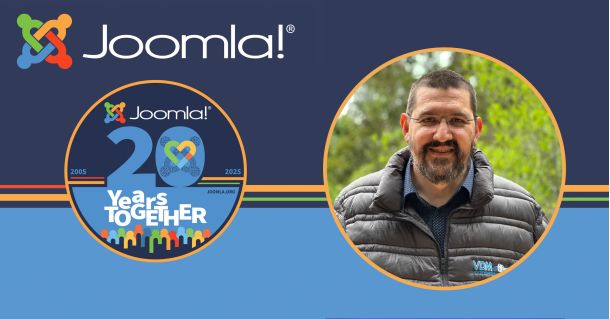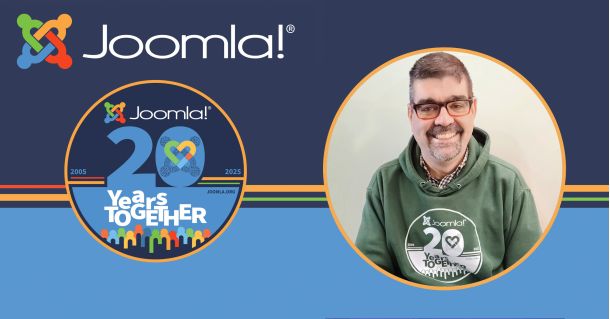
Joomla in Faces. Sonny Le (co-founder of Templaza)

- Published: 21 October 2025
- Last modified: 14 December 2025


Today, we're speaking with Sonny Le, the Co-Founder of TemPlaza. With over 15 years of deep-rooted experience in the Joomla ecosystem, Sonny has dedicated his career to a clear mission: creating powerful tools that empower developers and website creators. His current focus is the Astroid Framework, a modern and flexible foundation designed to unlock Joomla's full potential, making it more user-friendly, powerful, and ready for the future of the web.
1. Please tell us a few words about yourself
2. What was your first encounter with Joomla? How did it happen?
3. Have you worked with other Content Management Systems besides Joomla?
I am also developing applications for WordPress and Moodle LMS. Although these platforms currently bring in more commercial opportunities, I find their structures less flexible and not as well optimized as Joomla in terms of performance and code quality.
This realization motivated me to focus on building the Astroid Framework - a solution that empowers Joomla users with more flexibility and creative options when building their websites. I always encourage my clients to stay with Joomla or even consider switching to it whenever possible, because I truly believe in Joomla’s potential and the strength of its community.
4. Do you contribute to the Joomla community?
5. Why do you do this / what motivates you / what do you get out of it?
6. What is the state of the e-commerce market in Vietnam? Which online payment systems are the most popular?
The eCommerce market in Vietnam has been growing very fast over the past few years. More people are shopping online thanks to the widespread use of smartphones and social media. Major platforms like Shopee, Lazada, and Tiki dominate the market, while many small businesses are also building their own online stores.
When it comes to payment, e-wallets such as MoMo, ZaloPay, and VNPay are the most popular, along with traditional methods like bank transfers and credit cards. Cash on delivery is still common, but digital payments are rapidly increasing, especially among younger users.
7. Templaza offers a lot of templates. Could you please introduce your template club?
Sure! TemPlaza is a template and extension provider for Joomla CMS and WordPress. Our Template Club offers a wide collection of modern, responsive, and easy-to-customize templates for different industries - from business and education to portfolios and blogs.
Members of the club get access to all premium templates, regular updates, technical support, and exclusive tools like the Astroid Framework or TZ Portfolio, which allows users to build fully customized layouts without coding.
Our goal is to help users create beautiful, fast, and powerful websites with ease, while staying flexible enough for developers who want to go deeper into customization.
8. Is Templaza your main activity, or is it more of a hobby?
9. You are using the Astroid framework to build websites, and you used Helix earlier. Why did you choose Astroid?
Actually, I never used Helix before. In fact, I developed my own framework called Plazart, which was designed to give Joomla users more flexibility and control. Later, I received a call from Chetan Madaan from JoomDev, who invited me to collaborate on improving Astroid.
After trying Astroid, I was truly impressed by its structure, flexibility, and long-term potential. Chetan’s passion and vision completely convinced me, and that’s how my journey with Astroid began.
Unfortunately, JoomDev announced in 2021 that they would stop developing Astroid, which caused a lot of concern among its users. Since I already had deep knowledge of the framework and believed strongly in its value, I decided to take over the project and continue its development. From that point on, I became the sole developer of Astroid, and I’ve been dedicated to improving and supporting it ever since.
10. Templaza offers single sales, while other clubs use a subscription model (which gives access to all templates with domain limitations). What model would you advise to template developers who are just starting?
For developers who are just starting, I would recommend beginning with single sales to establish your brand and understand your customers’ needs.
Sonny
At TemPlaza, we actually offer both models — single sales and a subscription plan. Each has its own advantages.
The single sale model is great for users who just need one specific template for their project. It’s simple, clear, and helps build trust with new customers. The subscription model, on the other hand, works well for long-term users who want access to all templates, regular updates, and support.
For developers who are just starting, I would recommend beginning with single sales to establish your brand and understand your customers’ needs. Once you have a solid product base and user community, you can expand to a subscription model for steady growth and recurring revenue.
11. Does the ThemeForest marketplace brings extra clients, meaning no additional promotion is needed for your club?
ThemeForest definitely helps us reach a wider audience, especially new users who might not know about TemPlaza yet. It’s a great platform for visibility and sometimes brings in new clients who later become members of our Template Club.
However, we don’t rely on ThemeForest alone. We still invest in our own website, community, and direct support to build long-term relationships with users. In the end, ThemeForest is a useful channel, but our main focus is always on developing quality products and maintaining our loyal customer base through TemPlaza.com.
12. Joomla in Vietnam: could you please introduce your community?
The Joomla community in Vietnam is relatively small but very passionate and experienced. Many of us have been working with Joomla for more than a decade. We connect mainly through Facebook groups, local forums, and open-source projects, sharing knowledge and supporting each other.
Vietnam is also home to some well-known Joomla companies, such as JoomlArt and JoomDonation, which have made significant contributions to the global Joomla ecosystem.
I’m proud to be part of this creative and dedicated community, and I always try to promote Joomla through my own work and through projects like Astroid.
13. What key advantages of Joomla would you highlight?
From a software engineering perspective, Joomla’s biggest strength lies in its solid MVC architecture and modular design. It’s built around a well-structured framework that encourages clean, reusable, and maintainable code - something I really appreciate as a developer. The event-driven system and plugin architecture make it easy to extend core functionality without touching the core itself, ensuring long-term stability and upgradability.
Joomla also provides native ACL, multi-language support, and template overrides - all at the framework level, not as add-ons. These design choices reflect a mature engineering mindset that prioritizes flexibility, security, and scalability. In short, Joomla is one of the few CMS platforms that truly feels like it was built for developers.
14. What do you think needs to be improved in Joomla's infrastructure to make it even better?
To make Joomla stronger in the future, I believe we should focus on creating a smoother upgrade path that allows sites to move between versions with minimal friction.
Sonny
One of the biggest issues Joomla has faced in the past was the complex migration process between major versions. It often required a lot of time, technical effort, and cost, which unfortunately caused many users and developers to give up.
To make Joomla stronger in the future, I believe we should focus on creating a smoother upgrade path that allows sites to move between versions with minimal friction.
Besides that, marketing and community engagement need significant improvement. Joomla should communicate its strengths more actively and keep up with the fast-paced growth of competitors like WordPress. A strong marketing strategy could help bring developers back to the Joomla ecosystem and attract new users who value its technical flexibility and power.
15. Joomla is turning 20. What are your thoughts on this milestone?
It’s truly amazing to see Joomla turning 20. I still remember starting with Joomla 1.0 back in 2007 when I was just an intern — and I’ve grown together with it ever since. Over two decades, Joomla has proven its strength in flexibility, structure, and open-source spirit.
For me, this milestone is not just about age, but about resilience and community. Despite all challenges, Joomla is still here — modern, secure, and evolving.
I feel proud to be part of this journey, and I’m more committed than ever to helping Joomla move forward for the next 20 years.
Credentials
Follow NorrNext on LinkedIn to keep informed about announcements and recent news of our company.








